Set out on a journey to Kyoto’s Ginkaku-Ji Temple, where bamboo artistry and Zen serenity intertwine seamlessly. The allure of the Bamboo Forest beckons visitors to witness nature’s elegant dance, while the Zen Garden at Ginkaku-Ji promises a tranquil escape for contemplation. As visitors enjoy the Sea of Silver Sand and partake in the Tea Ceremony, a world of Japanese aesthetics unfolds before them. But there’s more to discover beyond the surface serenity of Ginkaku-Ji; a deeper exploration awaits those who seek a profound connection with Japan’s cultural and spiritual heritage.
Good To Know
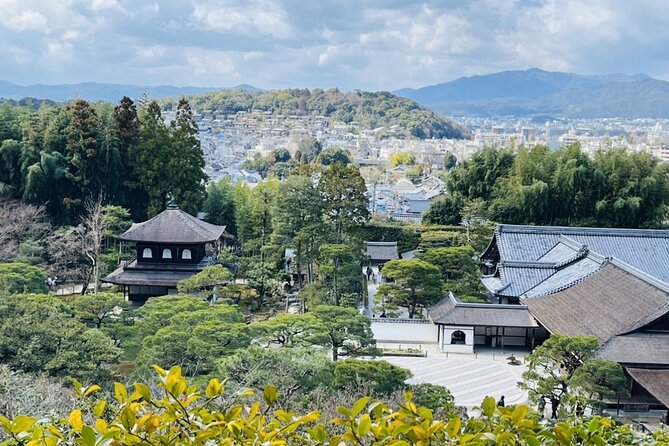
- Bamboo Forest near Ginkaku-Ji: Nature’s artistry with serene bamboo stalks in Kyoto.
- Zen Garden at Ginkaku-Ji: Sea of Silver Sand for contemplation and mindfulness.
- Tea Ceremony experience: Harmony and tranquility through matcha at Ginkaku-Ji.
- Path of Philosophy: Cherry trees and teahouses for introspection near Ginkaku-Ji.
- Ginkaku-Ji Temple: Tranquil haven with minimalist design and stunning garden landscapes.
Here's some other great tours and experiences nearby we think you'll like.
Ginkaku-Ji Temple: A Serene Haven
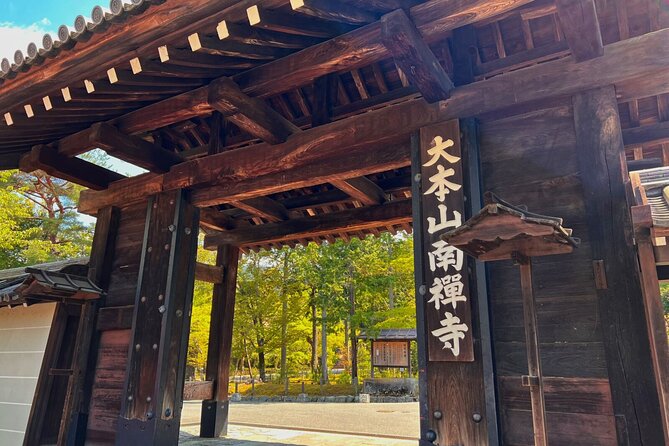
Ginkaku-Ji Temple, nestled in Kyoto, offers visitors a tranquil haven filled with bamboo artistry and Zen serenity. The temple, also known as the Silver Pavilion, exudes elegance with its minimalist design and stunning garden landscapes.
As visitors meander through the meticulously maintained grounds, they’re enveloped in a sense of calm and contemplation. The main building, originally intended to be covered in silver foil like its counterpart, the Golden Pavilion, showcases exquisite architecture and intricate details.
Ginkaku-Ji’s dry sand garden, known as the Sea of Silver Sand, captivates with its simplicity and symbolism. This serene haven provides a perfect retreat for those seeking a peaceful escape from the bustling city life of Kyoto.
Bamboo Forest: Nature’s Artistry

Among the lush surroundings of Ginkaku-Ji Temple in Kyoto lies a mesmerizing Bamboo Forest, where nature’s artistry unfolds in a tranquil symphony of green hues and rustling leaves. The tall bamboo stalks sway gently in the breeze, creating a soothing atmosphere that invites visitors to wander through its narrow paths.
Sunlight filters through the dense canopy above, casting dappled shadows on the ground below. The rustling of the leaves creates a natural melody, enhancing the sense of peace and serenity in this enchanting forest.
As visitors meander through the Bamboo Forest, they’re enveloped in a sense of tranquility and awe at the beauty of nature’s simple yet profound artistry.
Zen Garden: Tranquil Beauty
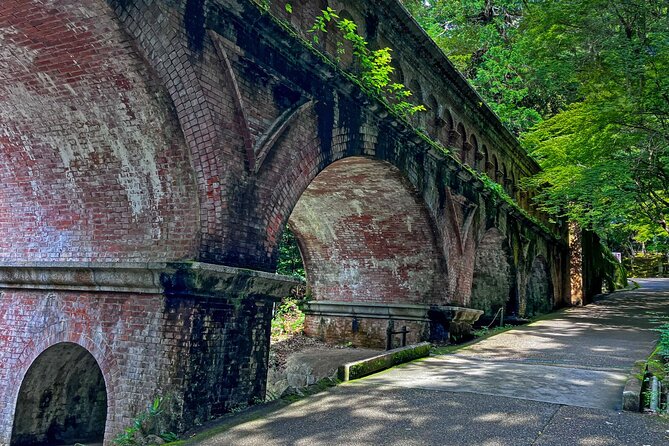
Enjoy the serene beauty of the Zen Garden at Ginkaku-Ji Temple in Kyoto, where tranquility and simplicity harmonize in a timeless display of Japanese aesthetics.
The Zen Garden, also known as the ‘Sea of Silver Sand,’ features meticulously raked white sand that symbolizes the ripples of a tranquil sea. Surrounding the sand are carefully placed rocks and moss, creating a minimalist landscape that encourages contemplation and mindfulness.
Visitors can stroll along the winding paths, enjoying the peaceful atmosphere and the subtle interplay of light and shadow.
The Zen Garden at Ginkaku-Ji exemplifies the principles of wabi-sabi, embracing imperfection and transience, inviting guests to appreciate the beauty of simplicity and find inner peace amidst the carefully curated natural elements.
Tea Ceremony: Cultural Experience
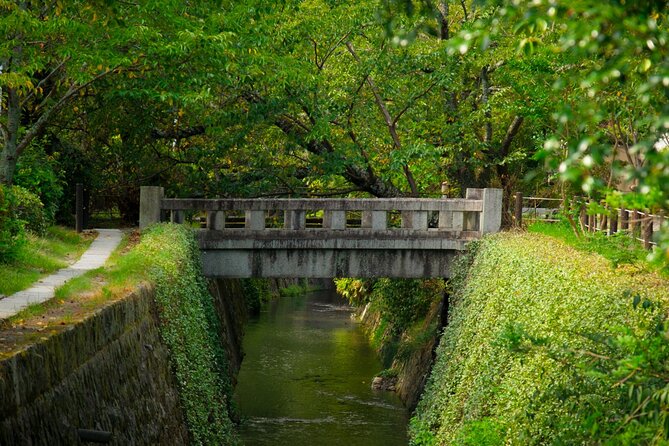
Set out on a captivating journey into Japanese tradition with the enlightening Tea Ceremony experience offered at Ginkaku-Ji Temple in Kyoto. The Tea Ceremony, known as Chanoyu or Sado, is a cultural practice deeply rooted in harmony, respect, purity, and tranquility.
Participants are guided through the intricate steps of preparing and enjoying matcha, a finely ground green tea. This immersive experience allows visitors to explore the essence of Japanese aesthetics and hospitality while savoring the moment in a serene setting. The ceremony fosters mindfulness, encouraging guests to appreciate each gesture and sip with intention.
Delicate tea utensils, graceful movements, and the peaceful ambiance of the tea room create a moment of profound connection with Japanese customs and philosophy.
Path of Philosophy: Contemplative Walk
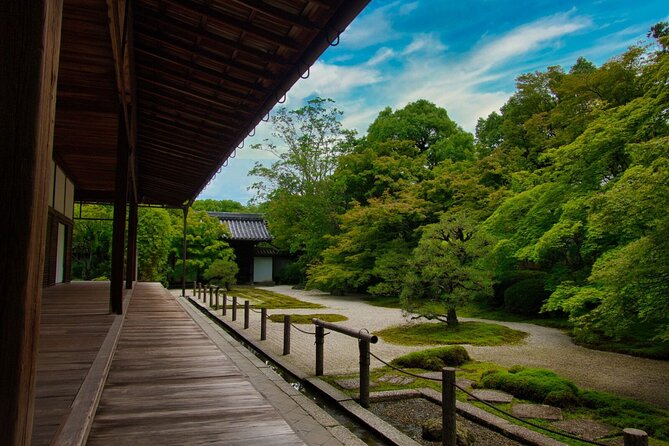
Stroll along the tranquil Path of Philosophy, a contemplative walk that meanders through picturesque surroundings near Ginkaku-Ji Temple in Kyoto. It invites visitors to reflect amidst the beauty of nature and ancient wisdom.
The path is lined with cherry trees that bloom in spring and vibrant foliage in autumn, offering a serene atmosphere conducive to introspection. As visitors walk beside the canal, the gentle sound of water flowing adds to the peaceful ambiance.
Stone sculptures and quaint teahouses dot the path, providing spots for quiet contemplation. The Path of Philosophy, named after the influential Japanese philosopher Nishida Kitaro, encourages a slow pace. This pace allows guests to immerse themselves fully in the harmonious blend of nature and intellectual stimulation.
Silver Pavilion: Architectural Marvel

With its intricate design and understated elegance, the Silver Pavilion stands as a noteworthy architectural marvel within the serene surroundings of Ginkaku-Ji Temple in Kyoto.
This structure, officially known as the Kannon Hall, was originally intended to be covered in silver leaf, giving rise to its common name. While the silver coating was never applied, the pavilion’s simple yet refined appearance has become an iconic representation of Japanese aesthetics.
The building features carefully crafted details such as delicate wooden carvings, sliding doors adorned with calligraphy, and a unique dry sand garden nearby. Visitors to the Silver Pavilion can admire the harmonious blend of nature and man-made beauty, experiencing a sense of tranquility and contemplation amidst its graceful architecture.
Machinovate Japan Ltd.: Tour Operator
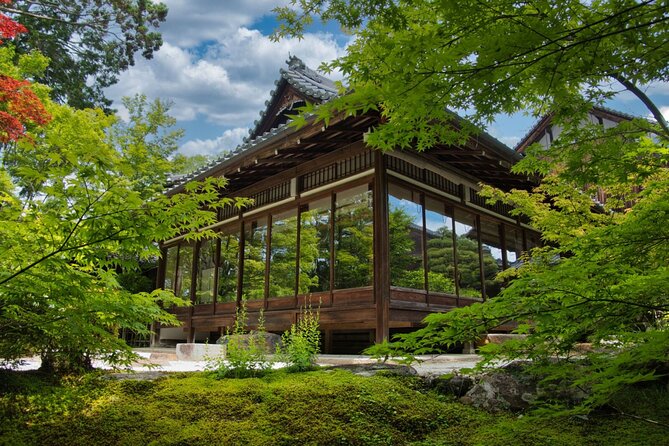
The Silver Pavilion’s allure at Ginkaku-Ji in Kyoto is complemented by the expertise of Machinovate Japan Ltd., the tour operator responsible for curating enriching experiences for visitors.
Machinovate Japan Ltd. offers a seamless blend of traditional charm and modern convenience, ensuring that travelers have a memorable and hassle-free exploration of this historic site. With a maximum capacity of 20 travelers, the tours provide an intimate setting for guests to enjoy the beauty and tranquility of Ginkaku-Ji.
Operated by Machinovate Japan Ltd., visitors can expect a well-organized itinerary, knowledgeable guides, and a customer-centric approach that caters to diverse preferences. Whether it’s a solo adventure or a group excursion, Machinovate Japan Ltd. promises an unforgettable journey through the wonders of Ginkaku-Ji.
Practical Information for Travelers

Visitors to Ginkaku-Ji in Kyoto can anticipate receiving essential guidance on navigating the site effectively and maximizing their experience. The confirmation at the time of booking ensures a smooth visit, while it’s important to note that the site isn’t wheelchair accessible.
Located near public transportation, most travelers can easily participate in the experience, with a maximum of 20 travelers per group. Operated by Machinovate Japan Ltd., the cancellation policy allows for a full refund if canceled up to 24 hours in advance, but no refund is given for cancellations less than 24 hours before the start time.
For any questions, travelers can refer to the Viator Help Center using product code 9582P93.
Frequently Asked Questions
What Is the Best Time of Day to Visit Ginkaku-Ji Temple?
The best time to visit Ginkaku-ji Temple is early morning or late afternoon. These times offer a quieter atmosphere and beautiful light for appreciating the temple’s serene beauty. It’s recommended to avoid midday crowds.
Are There Any Restrictions on Taking Photos in the Bamboo Forest?
Visitors can freely take photos in the bamboo forest at Ginkaku-Ji without restrictions. It’s a picturesque setting that allows capturing the beauty and serenity. Remember to be respectful of others and the surroundings.
Can Visitors Participate in the Tea Ceremony at the Zen Garden?
Visitors can participate in the serene tea ceremony at the Zen garden. It offers a tranquil experience, blending tradition and mindfulness. The ceremony provides a unique opportunity to take in the peaceful ambiance of the garden.
Is the Path of Philosophy Wheelchair Accessible?
The path of philosophy is not wheelchair accessible. The narrow and uneven terrain makes it challenging for wheelchair users. Visitors are advised to plan accordingly and explore alternative routes to fully experience the serene surroundings.
How Far in Advance Should I Book a Tour With Machinovate Japan Ltd.?
Travelers should book a tour with Machinovate Japan Ltd. at least 24 hours in advance to secure their spot. The full refund policy requires cancellations made 24 hours before the start time. Changes are not accepted within 24 hours of the tour.
The Sum Up
Enjoy the beauty and tranquility of Ginkaku-Ji Temple in Kyoto, where bamboo artistry, Zen serenity, and cultural experiences await.
Wander through the Bamboo Forest, contemplate in the Zen Garden, and partake in a traditional Tea Ceremony.
Stroll along the Path of Philosophy and marvel at the Silver Pavilion’s architectural wonder.
Let Machinovate Japan Ltd. guide you on this immersive journey into Japanese aesthetics and mindfulness.
Plan your visit and experience the serenity of Ginkaku-Ji today.
